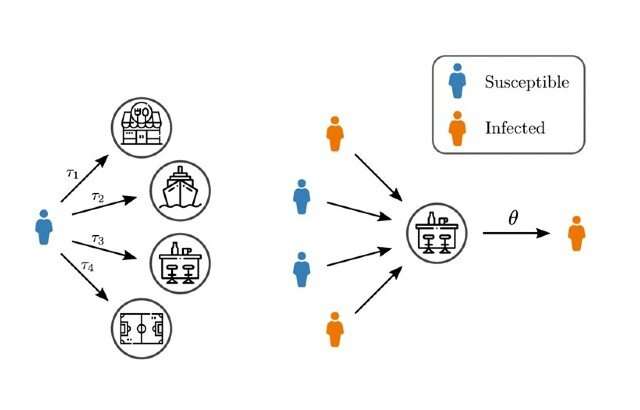Phys.org October 8, 2021
The complexity of real-world scenarios still poses new theoretical challenges for mathematical modeling of epidemic spreading. Existing network models of epidemic spreading often focus on contacts between pairs of individuals while co-location of individuals such as in the workplace, restaurants, or gym typically include more than two people. An international team of researchers (Canada, UK, USA – University of Vermont) has developed a new approach to epidemic modeling that considers interactions between two or more people in the same location and for different amounts of time and considered emerging evidence that suggests a minimal infective dose is required for an infection to occur. Their model reveals that infection kernels can be non-linear in these highly heterogeneous scenarios, meaning that if there are twice as many infected individuals visiting a given location the probability of infection can be also more than twice as big. These results shed new light on the very heterogeneous nature of super-spreading events in the context of COVID-19…read more. TECHNICAL ARTICLE

Modeling contagions and superspreading events through higher-order networks. Credit: Queen Mary, University of London